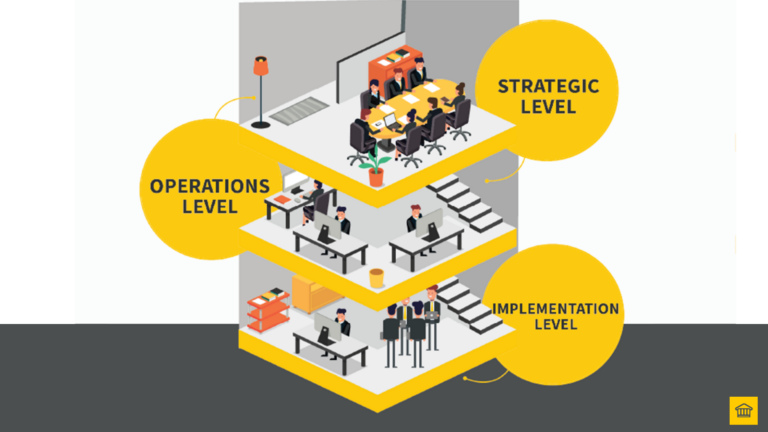From the Client-side, a business fails when it does not deliver the results or is unable to meet the ROI targets within the given time and budget. Using these two elements (realized results, and financial return), stakeholders often decide whether the project was a success or failure.
But what about from the Consultant or Consultancy’s side? What does the success or failure of a project look like for a consultant or consultancy?
If you’re a Consultant or a Consultancy, then this post is for you. In this post, we’re going to discuss the 5 ways to fail at the business transformation.
1. Start with the solution
You can’t start with technology and then work out how to sell it. Start with the problem, not the solution.
Use technology as a way to solve the problem. Keep in mind, that just adding technology can’t help you do the business transformation. More technology is not the solution. That’s why an IT led program doesn’t always translate into success. Here’s an example, adding a lot of gadgets to an existing clinic that already has its fair share of existing tech only complicates the ‘system’ rather than making it simpler.
Adding technology is going to complicate the system further. So what’s the right way? Analyze the needs of the business first, which means the problem & then add the IT elements wherever needed. First, change the people & processes, and then comes technology.
Technology needs to work and work better than the current solution, and most likely at a minimum, a step change from where it is today. So what happens when you just keep adding more technology? You end up, adding more technology without actually reaping its benefits. There will be only technology and not the solution to the actual problem. As a result, the business transformation fails.
2. Don’t involve your people
Engaging only part of the client organization (when others should also be involved), may lead to business transformation failure.
First, you identified the right people in the organization. Who are the right people? The people closest to the problem, that is most people in ‘Operations’.
Who aren’t the right people, are two types: The first type – is non-operation, and that is mostly ‘the management, senior management, or otherwise known as ‘the guys upstairs. Why these are not the right type of people is because they are too far removed from the problem. They don’t understand the problem well or close enough.
The second type of people is Technology or IT. This group of people is not the right people because although they can be closer to the problem than management, they also don’t live and breath the pain daily like ‘Operations.’ Their role in the project is to take the pain points that Operations provide them, turn that into solution requirements, and build systems to support their processes that remove the pain, not to create solutions based on their own perception of the pain, but on how it is felt and experienced by Operations.
What happens when IT starts designing solutions for their own understanding of the problem, you have reached what is known as “solution mode”, building solutions when you don’t fully or correctly understand the problem, and that never works out well for anyone.
Engaging only a few people will cause poor decision-making. Proper transformation is done by engaging both the right people from the client-side and the person managing it – the Business Transformator. It is ‘done-with-the-client’ not ‘done-for-the-client’ because the Business Transformator doesn’t know the business 100%, but the client themselves knows it well. It is the staff that knows the business best.
So what these people do is, respond to the meeting requests, read the request, understand what is asked or required, turn up to those meetings and contribute. But if the client sends the ‘wrong’ people or person, they don’t have the suitable or relevant knowledge, or experience in their position or organization nor the right level of management oversight or the authority to actually make those decisions or have those decisions supported.
If you don’t involve the right people it will create a lack of communication and a lack of direction. The result is a waste of everyone’s time, effort, and money.
Better communication and multidisciplinary collaboration is the cornerstone of business transformation. Involving your people enables a greater level of collaboration between the program team, and ultimately the organization, taking them along the transformation journey together. Together, it increases the pace of work getting picked up, started, and completed.
3. Boil the ocean
If you try to boil the ocean you will fail at the business transformation. Why? Because you can’t do everything for everyone, it’s not practical. It is not just only not practical, it’s almost not possible, but mostly, it’s not necessary.
What you will do by ‘boiling the ocean’ is eat through people’s time, effort and money, creating things that aren’t needed. This is what is known in the industry as “interesting but not useful”. Rather, what is important, is to realize their planned business benefits and actually achieve their Vision. Defining the Vision, is an activity that gets everyone on the same page about what you want to do, where you want to do it, and how you want to do it. Scoping the program, documenting and agreeing on the work, and objectives are captured in the Statement of Work (SOW). When you know what needs to be done, and how you will do it, it will help you achieve goals with ease and flow. The Result? A remarkable business transformation.
Focus on direction, vision, and scope. How does it help? Knowing the vision, direction and scope help you define and agree on the terms and conditions. The approach will become a documented and agreed way of working between yourself, as a Business Transformator, that we call ourselves, the activities you will carry out, and the outputs you are (and should be) expected to produce and deliver.
Focus helps you get to the end on time, within budget and scope with the help of the skill of the Business Tranformator.
Focus helps you get to the end on time, within budget and scope with the help of the skill of the Business Tranformator.
Heath Gascoigne Tweet
The only competition is to get to the end and transform the business on time, within budget and scope. As a result, your competition will pose a less threat. Less competition, means more chances of success.
For better results create a blueprint of a Statement of Work (SOW) that has the agreed terms & conditions and stick to it. Use this blueprint as a documented approach every single day to achieve your goal. At HOBA, that building block forms part of the Core Business Architecture that only focuses on the things we need to do, for an easy-to-use system and successful transformation.
4. Follow your chosen methodology “by the book”
The mistakes companies make when transforming or attempting to transform their organization, is following their chosen methodology ‘by the book’. What you need to do is choose a framework. You should choose a framework because a framework helps you with doing and completing the project rather than just planning your project. Based on your specific requirements choose either a waterfall or Agile approach.
A framework helps you do the work appropriately, and proportionately. Why does a framework work? Because a framework can be and should be adopted for the situation at hand.
What would be the ultimate result of applying your chosen framework appropriately and proportionately? The Business Transformator and the team will be able to deliver results more frequently, at a regular frequency or ‘rhythm.’ It helps you de-risk the project and provides more flexibility.
A great Business Transformator can also suggest you a hybrid approach based on your specific situation. They know your unique situation requires a tailored approach and not a ‘one-size-fits-all’ approach the bigger consultancies tend to use.
As a result, you will have successful projects, save time and money on doing their project – not filling up your or your staff’s diary with ‘interesting but not useful work’ that doesn’t get you closer to transformation, but most importantly realize their planned business benefits and actually achieve your Vision.

5. No Vision
Without a Vision, it’s like a boat without a rudder, you will forever spin in circles with no direction
Often the Founder, MD, or Executive team members who lack vision is not willing to make the change. Change is hard not just for them, they will resist change even if it’s in their favor. Those who lack the vision back off just before the delivery stage, even after the work at both discovery, and design. To save this, the vision statement needs to be articulated and decomposed into the following three sections
- Strategy (the How?),
- Objectives (the What?), and
- Measures (the When?),
Vision gives clarity about the direction and what the future looks like. It helps you build collaboration & teamwork to achieve project targets. How does it work? Vision is the first step is to getting everyone on the same page. It allows the team members to have a shared purpose and build collaboration and teamwork. How does it help? Vision consists of the strategies as the levels to pull to enable the people to achieve their goal. Once everybody on the team implements these strategies, the team will be able to achieve their intended results, better and faster.
The Vision statement addresses the WHY question – Why are you transforming?
The next question it addresses is How? Is the strategy. In business transformation, there are four (4) levels – people, process, technology and data. These are your strategies. You need at least one for each.
Each Strategy will have an Objective. This is the WHAT? What do you want to achieve from each strategy? Then Measures? These are the Measures of success and progress for each Objective? Measures address the When? question – when will the Objectives be achieved. We covered these in the VSOM article here.
Having a 20-foot Vision Statement will waste your time & energy. It is so lofty that it means, “nothing”. Most businesses theorize the vision statements without having any practical approach. Result? That is where most of the business transformations fail.
A consultant for business transformation
Hiring a consultant is the best thing you’d be doing to stay focused. A great consultant does not force the client to focus on the specific method but chooses to focus on the one that addresses your specific problem.
Thank you for reading this!
Sincerely,
Heath Gascoigne
P.S. If you want to join our Business Transformator community of 2000+ like-minded Business Transformators, join the community on the Business Transformator Facebook Group here.
P.P.S. If you want to learn more about business transformation, check out The Business Transformation Playbook here.
For more information, visit https://www.hoba.tech













